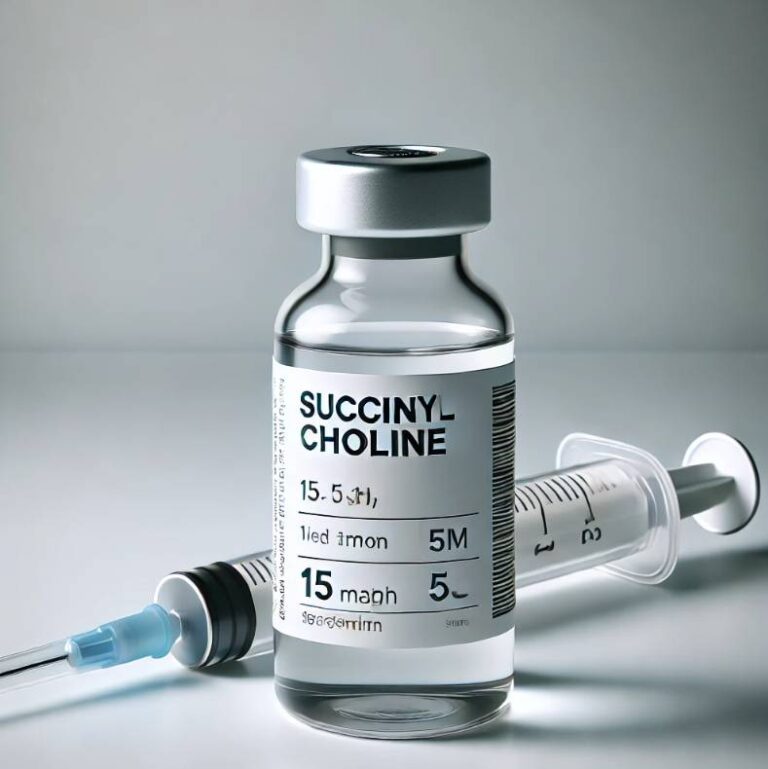Postoperative Nausea and Vomiting (PONV) is a common and distressing side effect of anesthesia. The risk of PONV can range from 30% in the general surgical population to 80% in a high-risk surgical population (Jin et al., 2020). While often considered a minor inconvenience, it can lead to prolonged hospital stays and reduced patient satisfaction (Jin, et al., 2020). There are a variety of anti-emetic medications (medications that reduce emesis, or vomiting) that can be used to avoid PONV.
The first step to addressing PONV is to identify patients at risk. Factors contributing to PONV include female sex, a history of PONV, susceptibility to motion sickness, use of volatile anesthesia, perioperative opioid administration, prolonged surgery duration, and certain types of surgery, such as cholecystectomy, laparoscopic, and gynecological procedures (Jin et al., 2020) (Nelson et al., 2023) (Gan et al., 2020). Given the substantial influence of general anesthesia on PONV, alternative anesthetic techniques can be employed to minimize risk. Regional anesthesia and neuraxial blocks are known to have lower incidences of PONV and may be utilized when appropriate. If general anesthesia is employed, propofol is the most common anesthetic agent used in induction of general anesthesia due to its lower side effect profile of postoperative nausea and vomiting (Nelson et al., 2019) (Gan et al., 2020). Nitrous oxide, on the other hand, has a higher rate of PONV, especially with patients who are already at increased risk (Nelson et al., 2019).
Several classes of drugs have proven to be effective anti-emetic medications and may be used to treat PONV. 5HT-3 receptor antagonists are the most common. Ondansetron, which is a 5-HT3 antagonist, is referred to as the “gold standard” in PONV risk reduction. Like ondansetron, palonosetron is a 5-HT3 receptor antagonist. As a monotherapy, palonosetron is more effective than ondansetron. (Jin et al., 2020). Examples of other 5-HT3 antagonists include dolasetron, granisetron, and tripisetron. Aprepitant is a NK-1 receptor antagonist that was initially used for chemotherapy-induced nausea and vomiting. However, it has been found to be effective as a part of multimodal PONV prophylaxis (Jin et al., 2020). Corticosteroids such as dexamethasone have been used to reduce the risk of PONV and may also help lower postoperative pain. Antidopaminergics such as amisulpride and droperidol have been found to be effective in management of PONV as well (Gan et al., 2020). Scopolamine, an anticholinergic, can be applied as a patch before and after surgery for prophylaxis. (Gan et al., 2020). Other examples of anti-emetic drugs include gabapentinoids such asgabapentin and pregabalin, midalozam, and ephedrine, however, these are less commonly selected for managing PONV (Gan et al., 2020).
Recommended combinations of anti-emetic medications to reduce PONV include: 5-HT3 receptor antagonists + dexamethasone, 5-HT3 receptor antagonists + aprepitant, aprepitant + dexamethasone, aprepitant + dexamethasone, 5-HT3 receptor antagonists + droperidol. There are a variety of other 5-HT3 combinations and antidopaminergic combinations that can be utilized (Gan et al., 2020). The most common pharmacologic prophylaxis for PONV is a combination of ondansetron and dexamethasone (Gan et al., 2020).
Some non-pharmacological approaches to preventing PONV include acupressure and acupuncture. One acupoint, pericardium 6 (PC6), has been found to be important in reducing risk of PONV (Jin et al. 2020). Common grocery store items such as ginger also can be used to combat PONV. Ginger may reduce inflammation pain and decrease the intensity of nausea and vomiting patients experience after surgery (Hall & Card, 2020).
Ultimately, PONV is an important complication of surgery and anesthesia that must be addressed in the perioperative setting. Further research should optimize combinations of anti-emetic medications and non-pharmacologic interventions to manage PONV. Individualized, multi-modal care plans which consider patient risk factors and surgical context are essential, with the ultimate goal of improving patient comfort and surgical outcomes.
References
Gan, Tong J et al. “Fourth Consensus Guidelines for the Management of Postoperative Nausea and Vomiting.” Anesthesia and analgesia vol. 131,2 (2020): 411-448. doi:10.1213/ANE.0000000000004833
Hall, Patricia Elizabeth Davies, and Elizabeth Borg Card. “Uses of Complementary and Alternative Medicine for Perioperative and Other Patients.” The Nursing clinics of North America vol. 55,4 (2020): 537-542. doi:10.1016/j.cnur.2020.06.020
Jin, Zhaosheng et al. “Prevention and Treatment of Postoperative Nausea and Vomiting (PONV): A Review of Current Recommendations and Emerging Therapies.” Therapeutics and clinical risk management vol. 16 1305-1317. 31 Dec. 2020, doi:10.2147/TCRM.S256234
Nelson, G et al. “Enhanced recovery after surgery (ERAS®) society guidelines for gynecologic oncology: Addressing implementation challenges – 2023 update.” Gynecologic oncology vol. 173 (2023): 58-67. doi:10.1016/j.ygyno.2023.04.009

